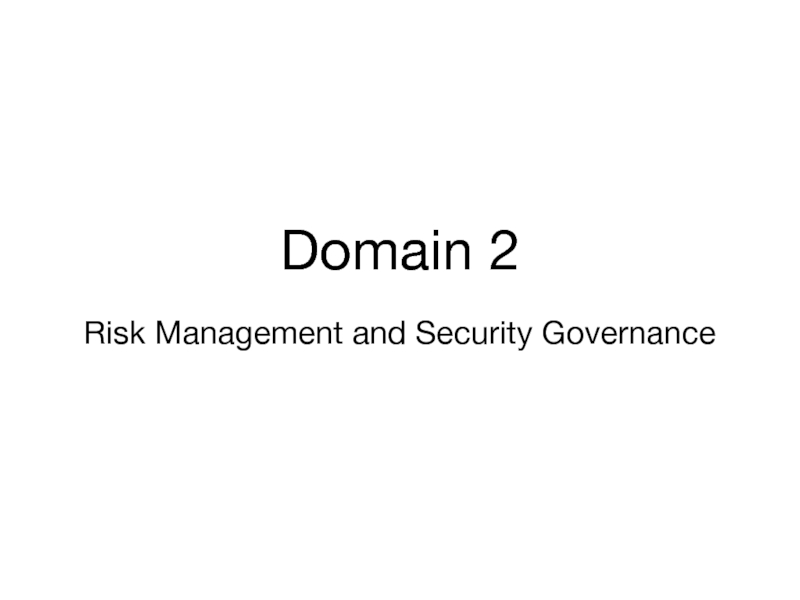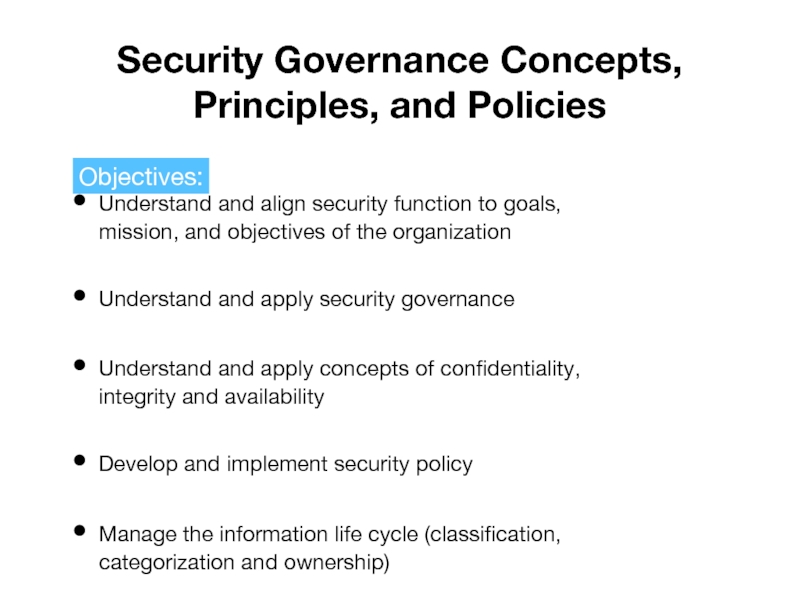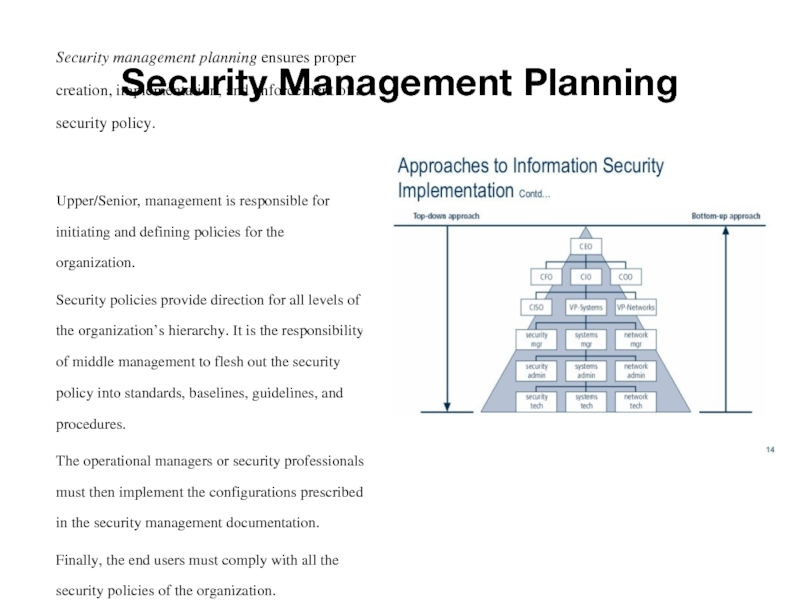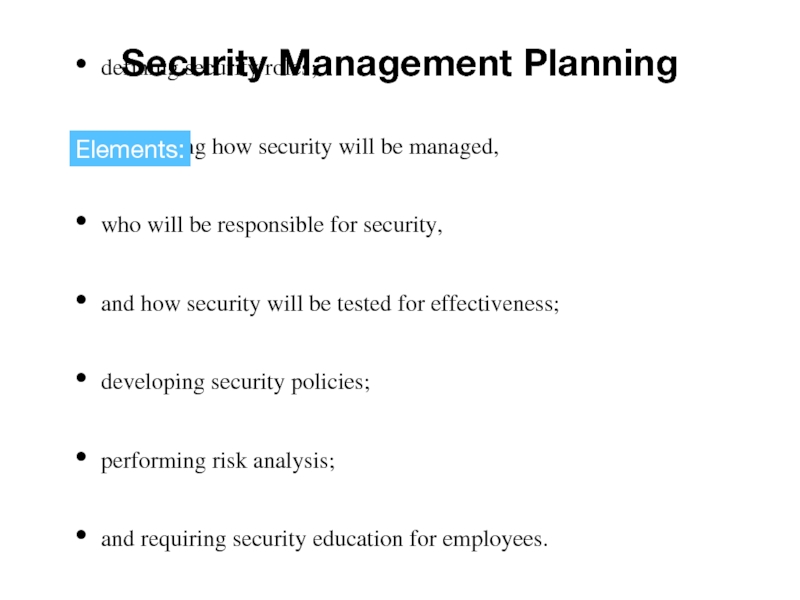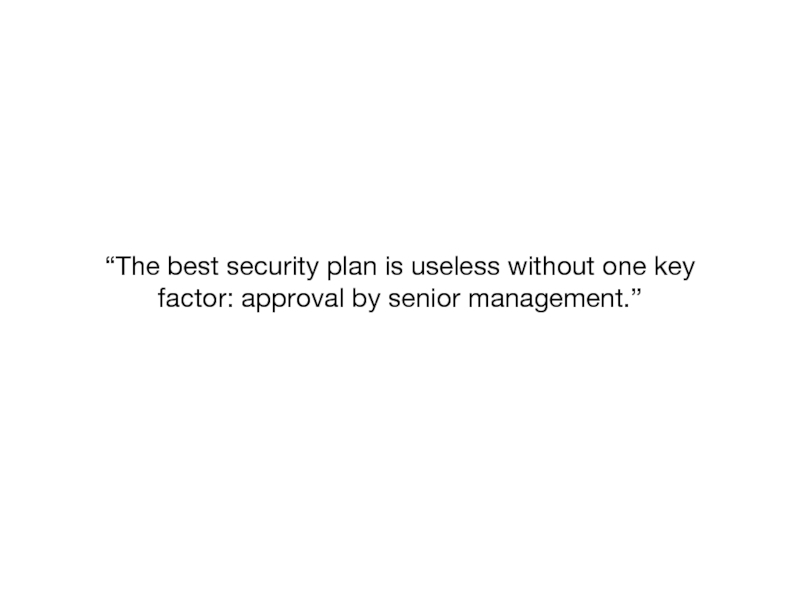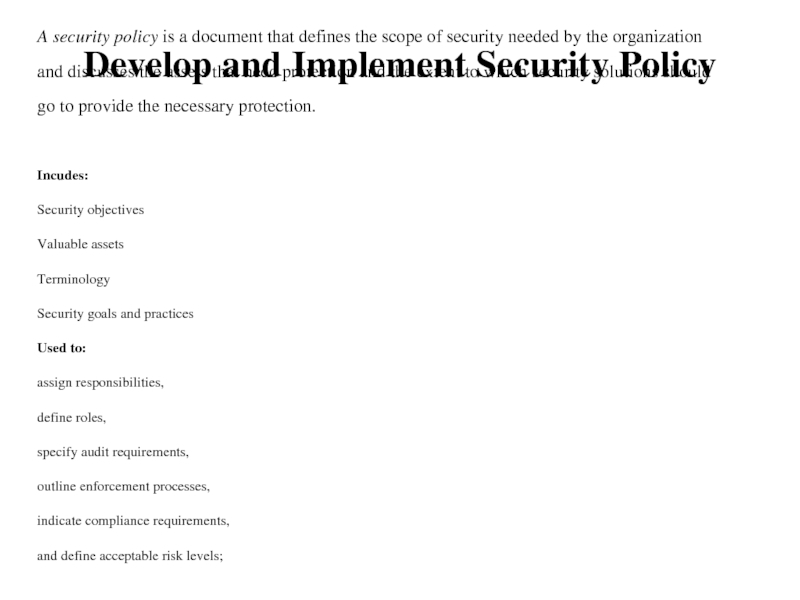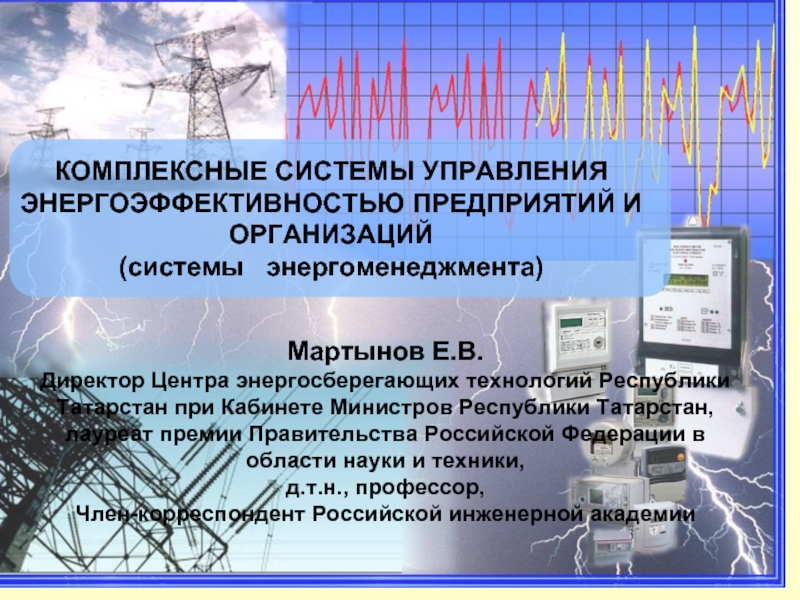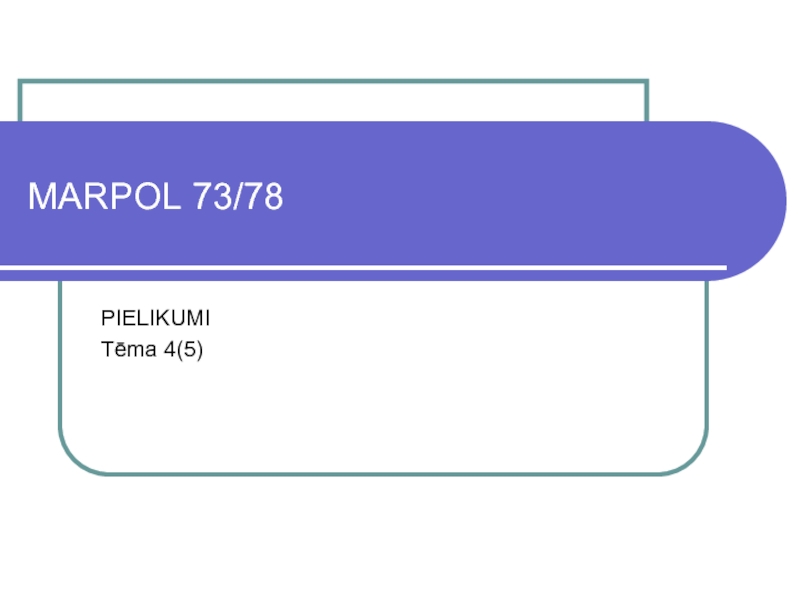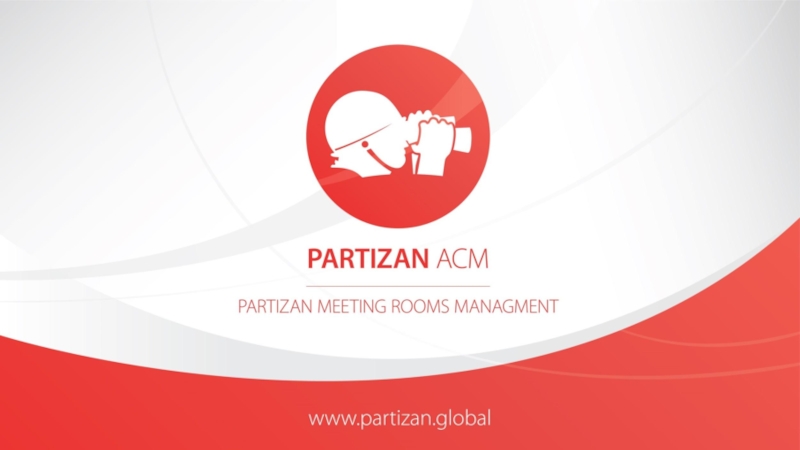- Главная
- Разное
- Дизайн
- Бизнес и предпринимательство
- Аналитика
- Образование
- Развлечения
- Красота и здоровье
- Финансы
- Государство
- Путешествия
- Спорт
- Недвижимость
- Армия
- Графика
- Культурология
- Еда и кулинария
- Лингвистика
- Английский язык
- Астрономия
- Алгебра
- Биология
- География
- Детские презентации
- Информатика
- История
- Литература
- Маркетинг
- Математика
- Медицина
- Менеджмент
- Музыка
- МХК
- Немецкий язык
- ОБЖ
- Обществознание
- Окружающий мир
- Педагогика
- Русский язык
- Технология
- Физика
- Философия
- Химия
- Шаблоны, картинки для презентаций
- Экология
- Экономика
- Юриспруденция
Lecture 4 презентация
Содержание
- 1. Lecture 4
- 2. Security Governance Concepts, Principles, and Policies Understand
- 3. Security Management Planning Security management planning
- 4. Security Management Planning defining security roles;
- 5. “The best security plan is useless without one key factor: approval by senior management.”
- 6. A security management planning team should develop
- 7. Security Governance Security governance is the collection
- 8. Security Roles and Responsibilities Senior manager
- 9. Protection Mechanisms Layering, also known as
- 10. Security Management Concepts and Principles SELF-READING CHAPTER 5
- 11. Develop and Implement Security Policy A
- 12. Security Standards, Baselines, and Guidelines What
- 13. Policies are broad security statements. Standards
- 14. Change Control/Management Data Classification SELF-READING SELF-READING CHAPTER 5
Слайд 2Security Governance Concepts, Principles, and Policies
Understand and align security function to
Understand and apply security governance
Understand and apply concepts of confidentiality, integrity and availability
Develop and implement security policy
Manage the information life cycle (classification, categorization and ownership)
Objectives:
Слайд 3Security Management Planning
Security management planning ensures proper creation, implementation, and enforcement
Upper/Senior, management is responsible for initiating and defining policies for the organization.
Security policies provide direction for all levels of the organization’s hierarchy. It is the responsibility of middle management to flesh out the security policy into standards, baselines, guidelines, and procedures.
The operational managers or security professionals must then implement the configurations prescribed in the security management documentation.
Finally, the end users must comply with all the security policies of the organization.
Слайд 4Security Management Planning
defining security roles;
prescribing how security will be managed,
who will be responsible for security,
and how security will be tested for effectiveness;
developing security policies;
performing risk analysis;
and requiring security education for employees.
Elements:
Слайд 6A security management planning team should develop three types of plans:
Strategic plan
Long-term plan. It defines the organization’s security purpose and helps to understand security function and align it to goals, mission, and objectives of the organization. It’s useful for about five years. A strategic plan should include a risk assessment.
Tactical plan
Midterm plan developed to provide more details on accomplishing the goals set forth in the strategic plan. It is typically useful for about a year. Some examples of tactical plans include project plans, acquisition plans, hiring plans, budget plans, maintenance plans, support plans, and system development plans.
Operational plan
Short-term plan. Highly detailed plan based on the strategic and tactical plans. Operational plans must be updated often (such as monthly or quarterly) to retain compliance with tactical plans. Operational plans include details on how the implementation processes are in compliance with the organization’s security policy. Examples of operational plans include training plans, system deployment plans, and product design plans.
Слайд 7Security Governance
Security governance is the collection of practices related to supporting,
Security governance must be assessed and verified from time to time.
Security is an organizational process, not just something the IT geeks do behind the scenes. Using the term security governance is an attempt to emphasize this point by indicating that security needs to be managed and governed throughout the organization, not just in the IT department.
Слайд 8Security Roles and Responsibilities
Senior manager
Security professional, Information Security officer, computer
Data owner
Data custodian
User
Auditor
Слайд 9Protection Mechanisms
Layering, also known as defense in depth, is simply
Abstraction is used for efficiency. Similar elements are put into groups, classes, or roles that are assigned security controls, restrictions, or permissions as a collective. Abstraction is used to define what types of data an object can contain, what types of functions can be performed on or by that object, and what capabilities that object has.
Data hiding is preventing data from being discovered or accessed by a subject by positioning the data in a logical storage compartment that is not accessible or seen by the subject. Forms of data hiding include keeping a database from being accessed by unauthorized visitors and restricting a subject at a lower classification level from access- ing data at a higher classification level.
Encryption is the art and science of hiding the meaning or intent of a communication from unintended recipients. Encryption is an important element in security controls, especially in regard to the transmission of data between systems.
Слайд 11Develop and Implement Security Policy
A security policy is a document
Incudes:
Security objectives
Valuable assets
Terminology
Security goals and practices
Used to:
assign responsibilities,
define roles,
specify audit requirements,
outline enforcement processes,
indicate compliance requirements,
and define acceptable risk levels;
Слайд 12Security Standards, Baselines, and Guidelines
What are the four components of
Question
Слайд 13Policies are broad security statements.
Standards are definitions of hardware and
Guidelines are used when there is not an appropriate procedure. Guidelines are flexible so they can be customized for each unique system or condition. They state which security mechanisms should be deployed instead of prescribing a specific product or control and detailing configuration settings. They outline methodologies, include suggested actions, and are not compulsory.
Procedures are detailed step-by-step instructions for performing work tasks in a secure manner.
